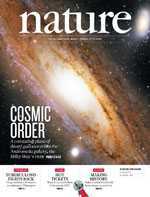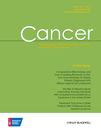Nature:揭示二甲双胍降糖新机制
2013-01-28 Nature 生物通 ZQ
《自然》(Nature)杂志近期发表的一项研究揭示了二甲双胍潜在的降糖新机制。此前的理论认为二甲双胍通过激活AMPK从而减少肝脏葡萄糖合成,而新的研究表明,二甲双胍通过诱导AMP和抑制腺苷酸环化酶的核苷酸在肝细胞内聚集,降低cAMP和PKA活性,PKA关键蛋白磷酸化步骤被阻止,因而肝细胞胰高血糖素依赖的葡萄糖输出被抑制。 研究由宾夕法尼亚大学Perelman医学院糖尿病、肥胖和代谢
《自然》(Nature)杂志近期发表的一项研究揭示了二甲双胍潜在的降糖新机制。此前的理论认为二甲双胍通过激活AMPK从而减少肝脏葡萄糖合成,而新的研究表明,二甲双胍通过诱导AMP和抑制腺苷酸环化酶的核苷酸在肝细胞内聚集,降低cAMP和PKA活性,PKA关键蛋白磷酸化步骤被阻止,因而肝细胞胰高血糖素依赖的葡萄糖输出被抑制。
研究由宾夕法尼亚大学Perelman医学院糖尿病、肥胖和代谢研究所的医学教授Morris J. Birnbaum领导的研究小组完成。研究者通过小鼠研究中我们指出了潜在的新药物靶点。
二甲双胍是2型糖尿病药物治中最常用的处方药。尽管二甲双胍可以有效治疗糖尿病,但它的作用机制至今却仍不完全被人理解。

Biguanides suppress hepatic glucagon signalling by decreasing production of cyclic AMP
Glucose production by the liver is essential for providing a substrate for the brain during fasting. The inability of insulin to suppress hepatic glucose output is a major aetiological factor in the hyperglycaemia of type-2 diabetes mellitus and other diseases of insulin resistance1, 2. For fifty years, one of the few classes of therapeutics effective in reducing glucose production has been the biguanides, which include phenformin and metformin, the latter the most frequently prescribed drug for type-2 diabetes3. Nonetheless, the mechanism of action of biguanides remains imperfectly understood. The suggestion a decade ago that metformin reduces glucose synthesis through activation of the enzyme AMP-activated protein kinase (AMPK) has recently been challenged by genetic loss-of-function experiments4. Here we provide a novel mechanism by which metformin antagonizes the action of glucagon, thus reducing fasting glucose levels. In mouse hepatocytes, metformin leads to the accumulation of AMP and related nucleotides, which inhibit adenylate cyclase, reduce levels of cyclic AMP and protein kinase A (PKA) activity, abrogate phosphorylation of critical protein targets of PKA, and block glucagon-dependent glucose output from hepatocytes. These data support a mechanism of action for metformin involving antagonism of glucagon, and suggest an approach for the development of antidiabetic drugs.
本网站所有内容来源注明为“梅斯医学”或“MedSci原创”的文字、图片和音视频资料,版权均属于梅斯医学所有。非经授权,任何媒体、网站或个人不得转载,授权转载时须注明来源为“梅斯医学”。其它来源的文章系转载文章,或“梅斯号”自媒体发布的文章,仅系出于传递更多信息之目的,本站仅负责审核内容合规,其内容不代表本站立场,本站不负责内容的准确性和版权。如果存在侵权、或不希望被转载的媒体或个人可与我们联系,我们将立即进行删除处理。
在此留言










#Nat#
56